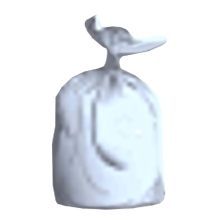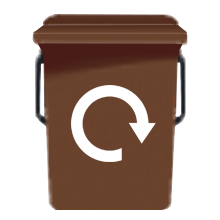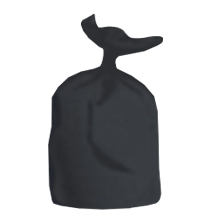Legionella bacteria can multiply in water systems. Droplets released by water systems such as cooling towers, showers, taps, Jacuzzi and whirlpool spas can be inhaled and cause serious pneumonia-like illness following exposure. Specific controls are required in Guernsey.
Unoccupied Buildings
You will need to ensure you deal with Legionella risks if your building is left unoccupied.
Some maintenance activities such as flushing and disinfection of water outlets might be classed as essential, but this is not always the case and will need to be justified on the basis of the risk assessment.
- If your building is left unoccupied and no flushing or cleaning takes place, you will need to implement a recommissioning plan, including flushing, temperature checks and disinfection of water outlets. You should consult your competent water hygiene engineer as water samples may need to be taken and analysed before you are able to re-open.
Guernsey requirements
- The principal requirements of the ACoP are as follows:-
- Under the Health and Safety at Work (General) (Guernsey) Ordinance, 1987, dutyholders including employers or those in control of premises, must ensure the health and safety of their employees or others who may be affected by their undertaking and must take suitable precautions to prevent or control the risk of exposure to Legionella.
- Identify and assess sources of risk by carrying out a Legionella risk assessment and ensuring it remains up to date;
- Prepare a written scheme of control (or course of action) for preventing or controlling the risk;
- Either understand, or appoint somebody competent who knows how to identify and assess sources of risk, manage those risks, prevent or control any risks and keep records;
- Implement and manage scheme of control - such as appointing a competent person to be managerially responsible, sometimes referred to at the 'responsible person';
- To provide information, instruction and training for persons with delegated responsibilities;
- Dutyholders must ensure that any contractors employed are competent to carry out the required tasks and that the tasks are carried out to the required standards.
Monitoring requirements
- Legionella monitoring should be carried out where there is doubt about the efficacy of the control regime or it is known that recommended temperatures, disinfectant concentrations or other precautions are not being consistently achieved throughout the system. The risk assessment should also consider where it might also be appropriate to monitor in some high risk situations, such as certain healthcare premises. The circumstances when monitoring for Legionella would be appropriate include:
- In water systems treated with biocides where water is stored or distribution temperatures are reduced. Initial testing should be carried out monthly to provide early warning of loss of control. The frequency of testing should be reviewed and continued until such a time as there is confidence in the effectiveness of the regime;
- In water systems where the control levels of the treatment regime, eg temperature or disinfectant concentrations, are not being consistently achieved. In addition to a thorough review of the system and treatment regimes, frequent testing, eg weekly, should be carried out to provide early warning of loss of control. Once the system is brought back under control as demonstrated by monitoring, the frequency of testing should be reviewed;
- In high-risk areas or where there is a population with increased susceptibility, eg in healthcare premises including care homes;
- In water systems suspected or identified in a case or outbreak:
Maintaining Legionella controls during a lockdown
- When Guernsey was placed into its second lockdown as a result of the coronavirus pandemic, businesses, schools, offices and many other buildings once again had their water usage drastically altered. Building owners and managers responsible for water hygiene, should to have a process in place to deal with this change of use and adapt their schemes of control effectively, learning from the previous lockdowns. Buildings come in many different forms, used in many different ways and have many different types of water systems, what is common to lockdown, potentially all buildings that are vacant or experiencing reduced use of the water will require different management in comparison to 'normal' occupation.
- The Control of Legionella Bacteria in Water Systems in Guernsey Part 1 states: Legionella Risk Assessments should be reviewed as a result of the following instances:
- A change to the water system or its use;
- A change to the use of the building where the system is installed;
- New information available about risks or control measures;
- The results of checks indicating that control measures are no longer effective;
- Changes to key personnel;
- A case of legionnaires' disease/Legionella associated with the system.
- In the case of lockdown, if your building experienced a change of use, or reduced occupation, this will reduce the amount of water being used. Slowing down water partially or completely will create areas of stagnation, which will in turn create environments for Legionella bacteria to thrive, you should avoid this by:
- Increased outlet flushing to replicate daily usage;
- Reducing cold water storage by lowering ball valves or bypassing completely;
- Turning off hot water systems in unoccupied buildings to reduce heat transfer to cold water systems;
- Isolating water systems at its source in unoccupied buildings, followed by a commissioning process before re-occupation;
- Isolating parts of the water system to ensure the outlets that are in use have adequate turnover;
- The most effective short term solution is to replicate normal building use by outlet flushing such until the temperature is comparable to the supply water, ensure outlets are left with 'fresh' water and not water from another part of the system;
Returning to your building after a lockdown
- Your course of action will depend on whether you continued to flush / clean during the lockdown under the essential maintenance general authorisation. If you were able to continue your Legionella management as normal, then you will be able to re-occupy your building without further restrictions. If you have not, you will need to take action as described below.
- 1. You must not put a property back into use without first considering the water quality, as during this period of inactivity the water systems will have stagnated, or, if systems have been drained down there may be pockets of water that remained in the system.
- 2. For each property / water system, a detailed recommissioning plan should be prepared. The number of steps in this plan will vary depending on the complexity and size of the water systems and importantly on the people who will be using these systems, this includes those undertaking the re commissioning works.
- 3. In order to formulate a recommissioning plan, you should consider the following: -
- How many buildings need to be recommissioned?
- When is the building due to be reoccupied?
- From this date you need to allow enough time for each step to be completed. What are the tasks that you need to complete for the water system(s) to be re commissioned? How long does each step take to complete?
- Who is going to be carrying out each step? Can they / you prove that they have received suitable Legionella training and are they competent? If not, can you assist through delivery of the required training to produce this assurance?
- Do you have a partial reoccupation that will require any additional flushing / monitoring until full occupation?
- 4. After a lockdown there are additional factors that will need to be considered:-
- How many other staff / contractors will be in the building and are they able to maintain social distancing?
- What is the availability of staff to carry out the works? If you're using sub-contractors to help with this process it is likely that there will be multiple organisations all asking for their services to help with re commissioning around the same time, so you will need to confirm what resources they have and when.
- What is the availability of equipment, chemicals and test equipment to measure the chemical levels? Both internally and externally
- What PPE is to be worn by those members of staff carrying out the works? Will there be sufficient available for them to complete the work in accordance the Safety Data Sheet?
- The requirement for microbiological samples to be taken post [2-7days] disinfection and for these to be submitted to a UKAS accredited laboratory. Will the laboratory have the capacity to receive and process these samples within the time limit for the samples to be viable?
- What if the sample results show there is still bacteria present in the water, would this prevent reoccupation or could additional temporary controls be applied / installed to allow the reoccupation and keep the building users safe?
- 5. Further guidance
- The Legionella Control Association has issued some useful guidance to reopen buildings.
Local Approved Code of Practice on controlling Legionella
- The Commerce and Employment Board (now Committee for Employment & Social Security) Approved a Code of Practice entitled
"The Control of Legionella Bacteria in Water Systems in Guernsey" (the ACoP) [1Mb] under the powers of the Health and Safety at Work (General) (Guernsey) Ordinance 1987. The ACoP requires those in control of buildings with cooling towers and water systems (property owner / facilities manager / building occupiers) to adopt suitable means to control Legionella in their premises. Therefore, water systems within the work place must not pose a risk to health so far as is reasonably practicable.
Reporting (RIDDOR)
- In addition, under the Health and Safety at Work (General) (Guernsey) Ordinance, 1987, Section 9 and Schedule 2 Part I (9), some positive Legionella results must be reported (online form) to the HSE depending the number of Colonies Forming Units (CFU) found:
- Between 0 and 99 CFU/L: No requirement to report to the HSE; take corrective action (for example cleaning, flushing) and resample;
- Between 100 and 999 CFU/L: Report to the HSE (e-mail is acceptable) with a list of remedial actions either taken or to be taken within a specific time frame;
- 1000 CFU/L and above: RIDDOR report to the HSE with an IMMEDIATE plan of action and ongoing investigative/remedial action.
- Please note that this relaxes the requirements of Section 9 and Schedule 2 Part I (9), which would otherwise require all positive results to be reported.













